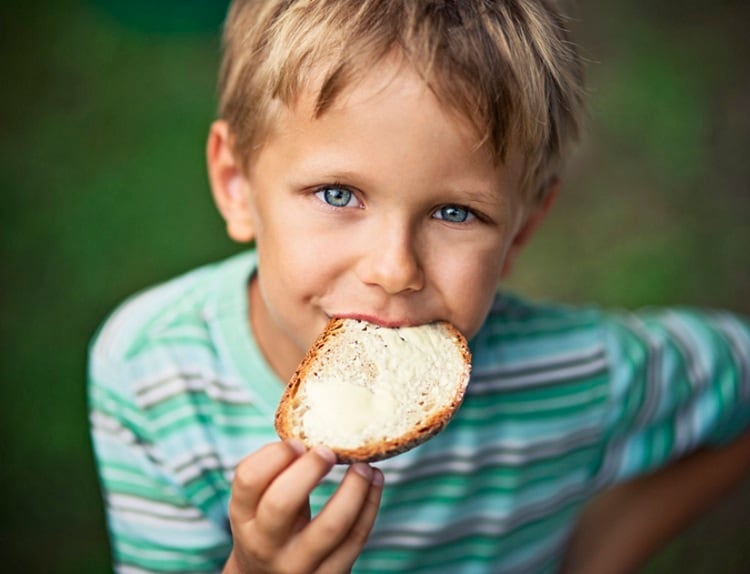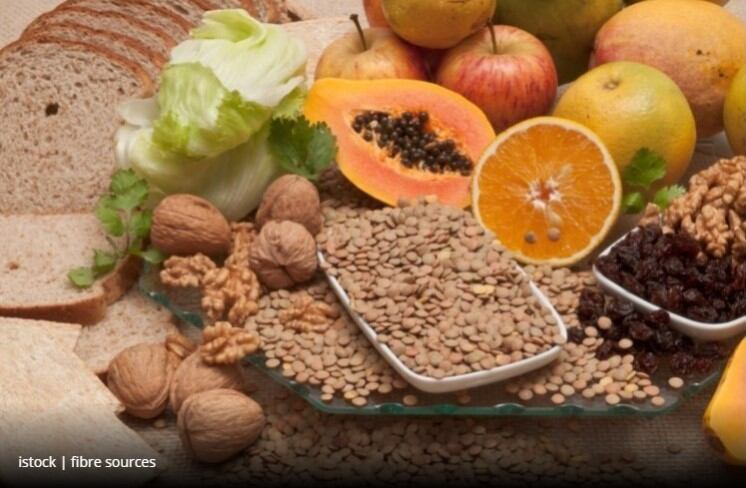The 2020-2025 Dietary Guidelines for Americans recommends a daily intake of 17g fibre (4-8-year-olds) up to 31g (14-18-year-olds). Evidence, however, shows alarmingly low fibre intake levels with 9 out of 10 American children consuming half of the Dietary Reference Intake advice. This fibre gap is even more pronounced in low-income and minority children.
The modern answer – high amylose wheat (HAW) flour.
A natural source of resistant starch, a newly published research paper in Frontiers contends HAW flour adds up to 2.5x the fibre to cereals, breads and tortillas. What’s more, it tastes and performs just like traditional flour – which means parents will avoid those high tantrum rebuffs of ‘icky’ food.
The authors – from the University of Minnesota, CSIRO and Bay State Milling – are calling on the bakery, snack and breakfast sectors to take a closer look – although some have already responded.
Bay State Milling, for example, developed HealthSense High Fibre Wheat Flour, which is low in carbs, packed with prebiotics and contains 10x the fibre of refined wheat flour. Since its launch in 2017, the novel flour has been used by a raft of producers, including Enlightened (ice cream cones and ready-to-bake cookies), Golden Home Bakery (pizza crust) and Flourish (flour), among others.
Breaking down wheat
Wheat is a staple across the world and a sustainable source of energy. However, just how beneficial it is comes down to the way it is processed.
When the kernels are ground into a refined flour, the fibre-rich bran and phytonutrient-rich germ layer are stripped out. Although products made with this flour do contain small amounts of dietary fibre, they generally elicit a high glycaemic load (GI) due to the readily available, high digestible starch content. As such, their consumption has been associated with a number of chronic diseases.
Unfortunately, kiddie’s preference lean toward these products, especially pillowy, white, refined breads.
According to the Frontier study’s authors, wheat starch typically contains around 70% amylopectin – which is easy to digest – and less than 30% amylose – less digestible, which contributes to a lower GI and translates into lower blood sugar, weight loss, and less risk of heart disease and diabetes.
To address the nutritional inadequacies of refined wheat flour, research into high amylose wheat (80% amylose) began in the 1990s by an international team of scientists (including CSIRO, which joined Limagrain Céréales Ingrédients and the Grains Research and Development Corporation in 2006 to form a company called Arista Cereal Technologies.
The substantial increase in amylose within the endosperm of the wheat kernel delivers a higher content of resistant starch (RS), which boosts the growth of good bacteria in the gut. Many studies show it has powerful health benefits, running the gamut from improved insulin sensitivity, lower blood sugar levels, increased satiety, better digestion and a reduced inflammatory response.
“Because wheat flour is the primary ingredient in a broad range of commonly consumed cereal products, any improvements to its nutritional value will have a positive impact of public health,” said the authors.
The scientists highlighted a range of studies on products benefitting from HAW, including bread, noodles and pasta. HAW breads, in particular – irrespective of whether they were made with whole wheat or refined flour – had a glycaemic response that was 39% less than that achieved with conventional bread, while insulin responses that were 24-30% favourable.
Although these trials only used healthy adults (32-35), similar advantages are expected for kiddies and adolescents.
HAW versus other ingredients high in RS
While other cereal-based ingredients high in RS have also been developed – like green banana flour and high amylose maize – the Frontier study scientists contended these came with ‘considerable limitations’.
“For instance,” they wrote, “adding 15% Hi-maize [Ingredion’s proprietary high amylose maize] to a bread recipe increased the RS content of the bread to 5%, but the bread had a worse appearance to the control, and had a lower volume and a lighter crust.”
Additionally, the addition of green banana flour will increase the RS content to 6%+, but even an addition of as low as a 10% replacement of wheat flour will contribute to lower volumes, greater hardness and a darker crumb and crust.
Conversely, they claimed, HAW will both punch up the RS content and boost the bread’s quality.
For example, a trial of flour tortillas made with a 50% HAW replacement delivered 2.5 times more dietary fibre and demonstrated a significantly higher rollability and foldability scores compared to tortillas made with conventional wheat – even after nine weeks of storage. Expert sensory panellists also reported pasta made with 50% HAW flour and 50% semolina had no discernible differences in flavour, aroma or texture.
“Because the most commonly cited reason for not consuming whole grain products is related to sensory attributes, it is important to ensure that the replacement of conventional refined flour with high amylose flour does not impart any differences in finished product quality,” said the researchers.
While most of the research conducted on HAW has been done using bread, tortillas and pasta, refined HAW flour can be equally effective in products like crackers, biscuits, breakfast cereals, pastries and wheat-based snacks.
“Given the well-known understanding that children like what they know and eat what they like, HAW has the unique potential to vastly increase dietary fibre consumption without compromising the desired sensory and finished product characteristics.”
Study
Authors: Kathryn Harris, Francine Overcash, Damien Belobrajdic and Joanne Slavin
Front. Public Health, 2022, 10:817967.
doi: 10.3389/fpubh.2022.817967
Disclaimer: All claims are solely those of the authors and do not necessarily represent those of their affiliated organisations, however, Bay State Milling financially supports Dr Overcash.





